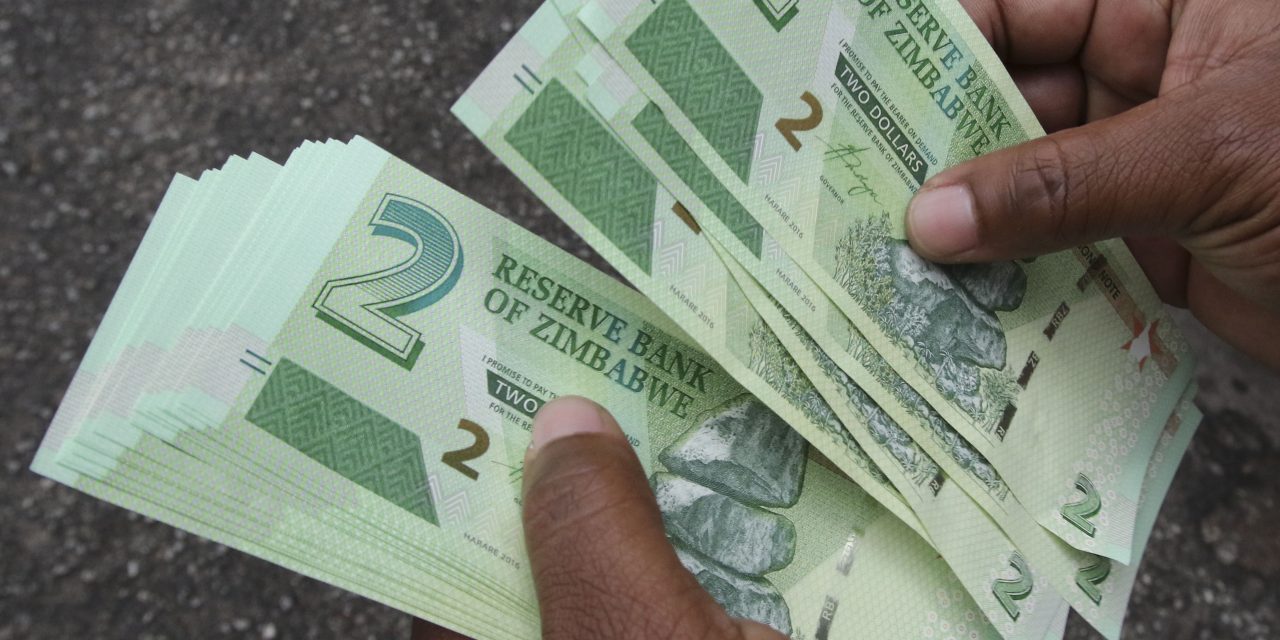The introduction of Statutory Instrument 142 of 2019 which dropped the multicurrency system in favour of using only the Zimbabwean dollar, a rebrand of the RTGS dollar sent shockwaves through the economy. One thing that has been missed in the madness over rates and prices is that the cash-out rate has shot up.
To understand the cash percentage if you’re not familiar with it we have to take a little walk down memory lane to understand why it exists. From 2009 to 2013 Zimbavwes economy stabilized under the multicurrency system with the US dollar as the unit of account. However, 2 problems emerged and the solutions to those 2 problems brought us the bond coin and note. The first problem was the lack of small denominations which made pricing difficult. The Rand fluctuated continually during that period so using its coins for this didn’t work. Enter the bond note. On the other hand, the money supply dropped below the required levels to stimulate growth due to our penchant for imports and other factors. As a result, we faced a tight money supply and deflation. Deflation sounds nice when you’ve dealt with hyperinflation but it is very bad for an economy. The solution? The bond note disguised as an export incentive.

The government had, of course, another problem on their hands, they couldn’t afford their bills. So the government borrowed mainly through the Reserve Bank Overdraft facility and treasury bills. Through this, they effectively created electronic money that wasn’t backed by any physical money. Then we get exchange rate madness once the difference between bonds and US dollars is clearly spelt out.
Herein lies the problem, we have according to Reserve Bank Governor John Mangudya somewhere between 600 – 800 million worth of bond notes in the system. In the same breath, we have approximately 8 billion in RTGS balances. So using the most optimistic estimate for every $1 worth of bond notes/coins there is $10 trapped in bank accounts chasing it. Hence we get withdrawal limits and cash is assigned a higher value than its electronic equivalents. To underline this Zimbabwe despite the efforts of Econet and the government is a cash-based economy. We have gone electronic out of necessity and as things stand people much prefer cash.
So we are here now. The cash rate while seemingly crazy is actually good reasoning that is backed by both economic and financial theory. Let me explain. Ideally, money in your bank account should be just as useful as cash in your hand but we know it is not. Zimbabweans live tough lives and policies can change in the blink of an eye. Bank transfers take around 24 hours to process and even then I cannot withdraw cash from the bank because they simply don’t have it. This puts a premium on cash. The same thing can be said of the notes and coins fetching different premiums as coins are cumbersome and may involve tedious counting when transacting. The premium for notes will be higher as they are more convenient. Speaking of convenience Ecocash should be more convenient as it transfers instantly and is widely accepted but both the Ecocash system and our economy are based on cash.
As a result of SI142 of 2019, which left Zimbabwean dollar (represented by bond notes in cash form) as the sole legal tender we have naturally seen an increase in demand for the bond notes. This makes perfect sense as they have become more useful for transacting, though it is by force. Regardless the demand has certainly gone up. Cash which used to attract a 25% premium (in order to withdraw $1 you pay the facilitator $1.25) now attracts a premium of up to 40% (for $1 you pay $1.40). In the same space, the cash percentage for coins went up from 20% to 35%, yes also a 15% increment.
Another factor may also have to do with the perceived decline in business for parallel market operators who have lost out on some business as the interbank market tries to bring the fight to them, offering those selling dollars higher rates than the parallel market. One thing the parallel has that the interbank market doesn’t is cash, how ironic. They pretty have a monopoly on that.
Zimbabweans have long complained about being charged a premium to withdraw cash. Particularly the small businesses who rely on cash to pay suppliers but must accept Ecocash in order to offer convenience to their customers. Many pass this cost on but this is very difficult to do in a time when policies that change the game are introduced clandestinely. Ecocash agents have particularly taken the heat for this and attempts to involve the company over the issue are very difficult. In reality, Ecocash has no ability to monitor the transactions of vendors as these are off the books nor influence the money supply mismatch.
Reserve Bank Governor John Mangudya did address the lack of bond note and coin availability and said that government were set to print $400 million worth of bond notes to plug the hole left by the removal of foreign currencies from being acceptable legal tender. This should ease the situation, however, that would only take us to 1-1.2billion worth of bond notes to cover the over 8 billion in electronic money. Cash would remain tight. Of course, the government revels in this as new tax superstar on the block the Intermediated Monetary Transfer Tax it 2% tax has been a stellar performance for them. Remember it is per transaction over $10 and this has brought them a lot of money.







